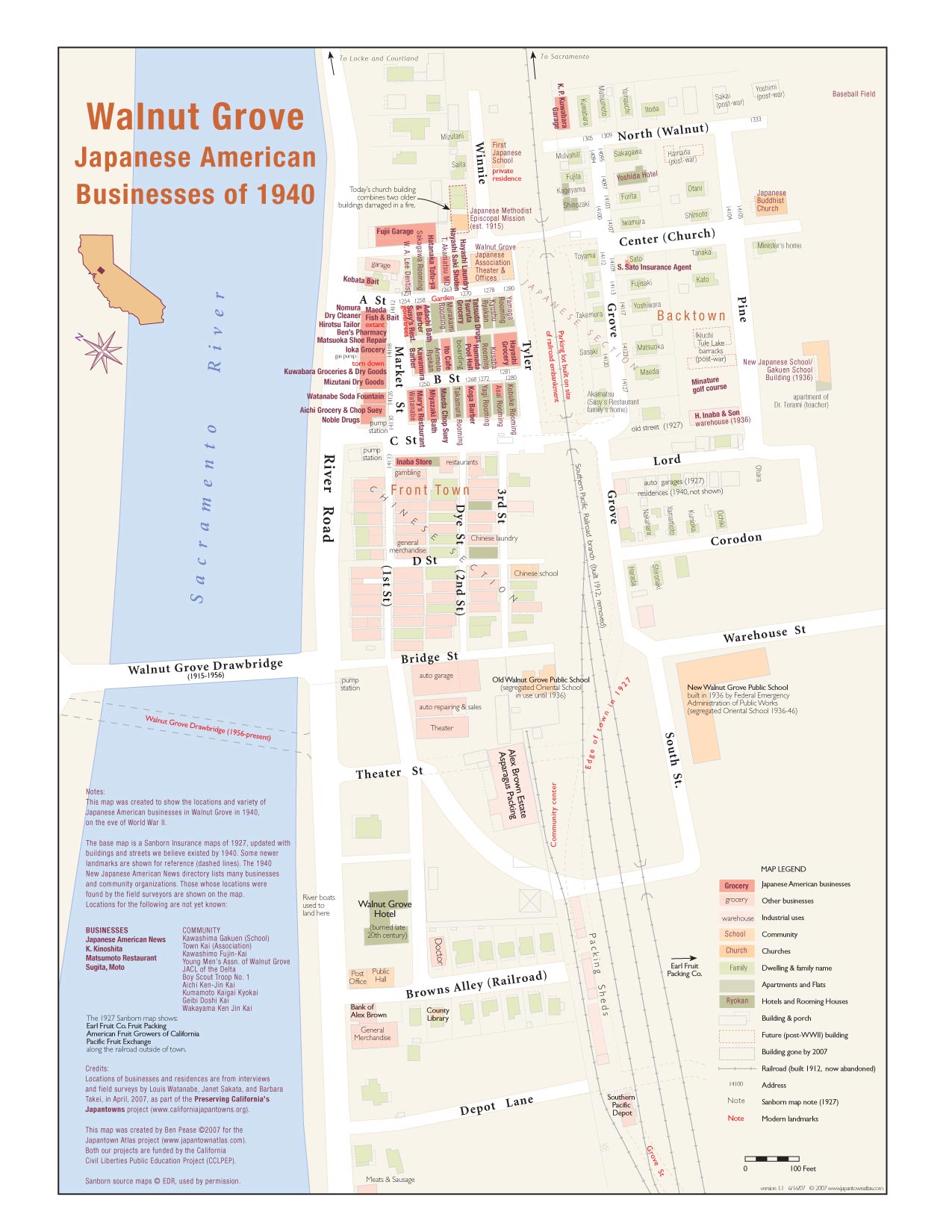![]() Japantown
Atlas - Northern California - Walnut Grove
Japantown
Atlas - Northern California - Walnut Grove
Overview Map: Walnut Grove - Japanese American Businesses of 1940

Walnut Grove is a small farm town in the Sacramento/San Joaquin Delta, about 20 miles south of Sacramento. It was a thriving Japanese American community, with Buddhist and Methodist churches, a gakko (Japanese school), and a slew of hotels, pool halls, barber shops, and restaurants. The town is approximately 10 feet above sea level, and the road through town runs along a 10-foot high levee which keeps the Sacramento River from flooding the town in winter. Several of the riverfront buildings have ground-floor storefronts facing the town with second-story storefronts facing the road and river.
Walnut Grove was laid out with separate Japanese, Chinese, and white districts (north to south). The Chinese section burned in 1915 and 1937. After the first fire, many Chinese residents resettled 1/2 mile north in the new town of Locke. Both towns were plagued until recently by the problem of the land and buildings having separate ownership – Sacramento County has begun to work towards resolving this problem and helping owners fund needed improvements to these historically significant buildings (such as basic foundations).
Before the advent of good highways in the 1930s, riverboats provided regular passenger and freight service between Sacramento and San Francisco. The night boats stopped across from the Walnut Grove Hotel in the wee hours of the morning. Also, in the early 1900s, the Southern Pacific Railroad ran a branch line from Sacramento to Locke, Walnut Grove, and Isleton. The trains ran through Walnut Grove on a high embankment where today's public parking is located.
The railroad embankment divided the town into "Front Town" business district (in which many Nikkei lived above or behind their businesses) and "Backtown", which was mostly residential with Japanese and Caucasian schools, churches, and a baseball field. The Kawashima Gakuen (school) was privately run; the teacher lived in the wing. The Walnut Grove public school was segregated (non-White children only–the white school was farther south); even the new school built during the Depression was segregated until after WWII.
Walnut Grove still has a fairly large Japanese American presence – there are a few surviving businesses, and the annual Buddhist Church Bazaar fills the streets with neighbors and former residents each summer. Highlights include the Kawashima Gakuen (Walnut Grove School), the Buddhist Church, the former Ben's Pharmacy block (a classic square-front wooden commercial block), and the Japanese Gakuen (school); several of the Backtown dwellings have Japanese style gardens and woodwork.
Selected Photos:
First posted 7/27/07; reposted 1/6/07 with photographs.